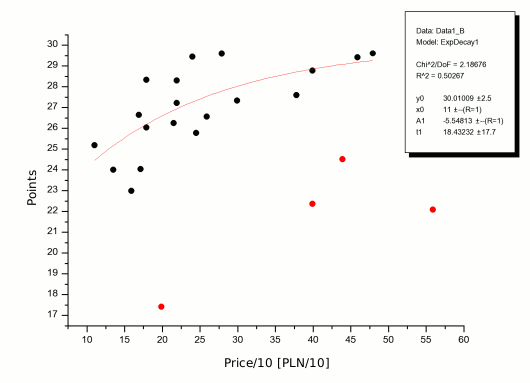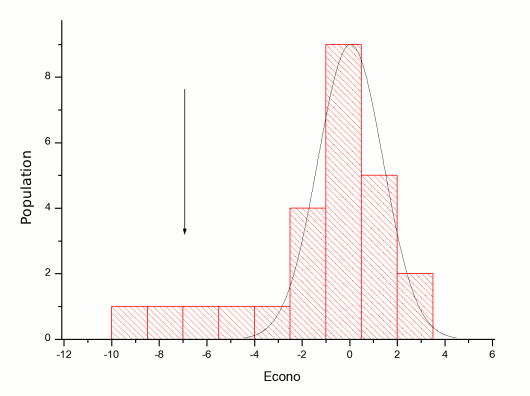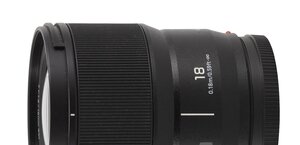Polarizing filters test
4. Results and summary
| 1 | B+W Slim KSM C-POL MRC 72 mm | ||||
| Marumi DHG Super Circular P.L.D 72 mm | |||||
| 2 | Fujiyama Digital DHG Circular P.L.D 72 mm | ||||
| B+W Slim C-POL MRC 72 mm | |||||
| 3 | B+W KSM C-POL MRC 72 mm | ||||
| 4 | Marumi DHG Circular P.L.D 72 mm | ||||
| Kenko PRO1D Wide Band C-PL(W) 72 mm | |||||
| 5 | Sigma DG Wide Circular PL 72 mm | ||||
| 6 | B+W C-POL MRC 72 mm | ||||
| 7 | Hoya Pro1 Digital MC PL-C 72 mm | ||||
| 8 | Marumi MC C-P.L 72 mm | ||||
| Hoya HMC Super PL-CIR 72 mm | |||||
| 9 | Hoya HMC PL-CIR 72 mm | ||||
| 10 | Marumi Wide MC C-P.L 72 mm | ||||
| 11 | Fujiyama Digital MC C-PL 72 mm | ||||
| 12 | King Circular Polarizer 72 mm | ||||
| 13 | Heliopan ES Pol circ. SH-PMC 72 mm | ||||
| 14 | Fujiyama Digital CPL 72 mm | ||||
| Hoya PL-CIR 72 mm | |||||
| 15 | Fujiyama Digital C-PL E 72 mm | ||||
| 16 | Tiffen Cir. Polarizer 72 mm | ||||
| 17 | Heliopan ES Pol circ. Kasemann 72 mm | ||||
| 18 | Fomei Digital CPL 67 mm* | ||||
| 19 | Marumi Water Proof Coat Circular P.L 72 mm | ||||
| D | B+W EW KSM C-POL MRC 72 mm |
- *Filter of smaller diameter – in vignetting grade an arithmetic mean of the other filters was taken.
Please Support UsIf you enjoy our reviews and articles, and you want us to continue our work please, support our website by donating through PayPal. The funds are going to be used for paying our editorial team, renting servers, and equipping our testing studio; only that way we will be able to continue providing you interesting content for free. |
- - - - - - - - - - - - - - - - - - - - - - - - - - - - - - - - - - - - - - - - - - - - - - - -
Tables of rudimentary results of all the filters are liked below:
B+W EW KSM C-POL MRC 72 mm filter got the most points and… was disqualified. It’s hard to say why a polarizer tagged with letters “c-pol” on the ring, and “circular-pol” on the box turned out to be linear. Perhaps it wouldn’t be so shocking if it hadn’t been for the fact that it was manufactured by an acknowledged company with a good reputation. Additionally it’s the most expensive in the field. Shame and scandal.
After such blunder we have mixed feeling about the first place won by the same manufacturer (B+W Slim KSM C-POL MRC 72 mm). Still, it’s hard to raise objections to it. Optical quality doesn’t arouse caution, antihalation layers work magnificently, filter is well-built of good quality materials. It was possible to reach a compromise between extinction coefficient and total light transmission. Unfortunately, this filter belongs to the group of the most expensive ones in the field and I guess that is its main shortcoming (at least in the amateur market, where price is significant).
Marumi DHG Super Circular P.L.D 72 mm shared the first position and Fujiyama Digital DHG P.L.D 72 mm was right behind it. These two filters are very similar. It’s no wonder, as they’re both manufactured by Marumi. Admittedly, they don’t have antihalation layers as good as B+W, but it’s difficult to pick at any other aspect, both image and mechanical quality. Marumi hasn’t let us down here, showing other manufacturers that it’s possible to create a polarizer of a very good quality for reasonable money. This producer’s filters are scattered through the whole ranking, so everyone will find something for themselves. Too bad for the WPC model, though, which, apart from a hydrophobic layer, doesn’t offer much.
Hoya, with its crashing superiority at the UV filters test, this time came in the middle of the field, not delighting and not offending. What’s interesting, they best result of Hoya’s products got a Kenko filter. Admittedly, though, Hoya polarizers showed their class in terms of extinction coefficient, but paid for it with lower mean transmission, and their homogeneity wasn’t perfect either.
There was only one Sigma filter in the test. It came in the good, fifth place. You can’t say it stand out with anything, it’s just good. This doesn’t justify the difference in price between it and Marumi products, which got a higher result.
Also King has only one representative, it came in 12th place. We need to stress that it’s the cheapest tested 72 mm filter and still it beat Tiffen, and both Heliopan products (one of them five times as expensive!). To tell the truth, you can see slight scattering, inhomogeneity and flares, but on the other hand we get a polarizer of very good extinction coefficient that won’t ruin us.
Tiffen is another solo-player among the starters. The company is well-known and identified with good quality cinematographic, and, for some time, also photographic accessories. After conducting the tests we can’t really explain this common good opinion. We can and should expect much more from filter quality for this price. The extinction coefficient is the only parameter Tiffen didn’t show any faults. It’s not even close to B+W or, twice cheaper, Kenko. Tiffen should verify the quality of those filters before the market verifies Tiffen.
Fomei can pride itself having the highest mean transmission among all the tested filters. Unfortunately, it’s too high. Admittedly, the transmission of the wave polarized parallelly to the azimuth of the polarizer tops 90% being an impressive result, but the wave polarized perpendicularly should not be passed through in such amount. Fomei doesn’t perform well the basic task it was created for, so it lost 11 points and hit the last but one place.
Finally, we have two Heliopan filters. The company is well-known and considered the manufacturer of professional accessories. Similarly to Tiffen, it’s difficult to agree with this opinion. The only positive aspect is the coefficient of extinction of the SH-PMC polarizer. Scattering of light is very large, you can observe flares and halo effect, homogeneity is not particularly good either. Heliopan filters presented optical quality much worse than average, plus their price is very high.
Looking at the ranking, you can see that we can find both expensive and lousy, and cheap and good filters. In order to find products offering the most for the least, we’ve decided to create an econo-ranking.
On the graph below, on the axes we laid off the price (scaled by factor 0.1) and the amount of points. The results were approximated by the exponential decay curve. Four dots that were definitely sticking out and far from others were excluded from this operation.
 |
What we can read right off the approximation:
- Filters produced in nowadays technology tend to 30 points, if you take into account the criteria in this test. Apparently, the golden mean lies in this area for all the tested parameters.
- The quality of a filter increases with the exponential decay curve together with price. That means that with each doubling of the price, there’s a twice smaller increase in quality.
 |
The distance of quality-price dots from the exponential curve follows the normal distribution with maximum in the range of zero. On the left side (marked with an arrow) you can see four incongruous dots. It can be caused by quality control errors, deliberate introducing of cheap products and selling them at high price under the logo of known manufacturers or irrationally inflated price. Whatever the cause, buying these products is a waste of money.
Taking into account the range of points, the ranking econo below should be read:
- Over 1.5 – Very good price/quality ratio
- 1.5 to 0.5 – Good price/quality ratio
- 0.5 to -0.5 – You get what you pay for
- -0.5 to -1.5 – You could’ve gotten something better for the price
- -1.5 to 2 – The price is definitely too high for the quality
- Less than -2 – Disaster, money thrown down the drain
| 1 | Fujiyama Digital DHG Circular P.L.D 72 mm | ||||
| 2 | Marumi DHG Circular P.L.D 72 mm | ||||
| 3 | Marumi DHG Super Circular P.L.D 72 mm | ||||
| 4 | Kenko PRO1D Wide Band C-PL(W) 72 mm | ||||
| 5 | King Circular Polarizer 72 mm | ||||
| 6 | Marumi MC C-P.L 72 mm | ||||
| 7 | B+W Slim KSM C-POL MRC 72 mm | ||||
| 8 | Hoya Pro1 Digital MC PL-C 72 mm | ||||
| 9 | B+W Slim C-POL MRC 72 mm | ||||
| 10 | B+W KSM C-POL MRC 72 mm | ||||
| 11 | Marumi Wide MC C-P.L 72 mm | ||||
| 12 | Hoya HMC PL-CIR 72 mm | ||||
| 13 | B+W C-POL MRC 72 mm | ||||
| 14 | Hoya HMC Super PL-CIR 72 mm | ||||
| 15 | Sigma DG Wide Circular PL 72 mm | ||||
| 16 | Hoya PL-CIR 72 mm | ||||
| 17 | Fujiyama Digital MC C-PL 72 mm | ||||
| 18 | Fujiyama Digital CPL 72 mm | ||||
| 19 | Fujiyama Digital C-PL E 72 mm | ||||
| 20 | Heliopan ES Pol circ. SH-PMC 72 mm | ||||
| 21 | Tiffen Cir. Polarizer 72 mm | ||||
| 22 | Heliopan ES Pol circ. Kasemann 72 mm | ||||
| 23 | Marumi Water Proof Coat Circular P.L 72 mm |
- In the ranking the B+W EW KSM C-POL MRC 72 mm filter was omitted, as it was disqualified, and the Fomei Digital CPL 67 mm filter, which is sold with two other filters in kit.
The first place shouldn’t surprise anyone, Fujiyama came in 2. in the overall ranking costing 240 PLN at the same time. Marumi came in 3 first places proving their owners well-spent money.
On the fourth place there’s Kenko, the rest of Hoya concern filters came in the middle of the field (just like in overall ranking). It means that the future buyers of Hoya polarizing filters, even if they don’t get the best products on the market, are not going to overpay.
Fifth place, occupied by the King filter, is a proposition for those who want a polarizing filter for the cheapest price. Its relatively high position in the overall ranking is not only a matter of price, but also pretty good results. If someone is not bother by flares, though, can safely buy this filter.
Further there’s the B+W Slim KSM C-POL MRC 72 mm filter which came first in the overall ranking. Its 7. place in the econo-ranking (0.34 grade) shows that we spend 479 PLN for much more than the producer’s logo here. It’s a product we have nothing to accuse of and, in addition, it doesn’t have an inflated price.
The Fujiyama filters not marked with DHG symbol come off rather badly in the price/quality ratio. In this case it’s worth to consider whether or not spend a little more money for the better version coming in the first place. Particularly, the Marumi WPC filter’s results are, to put it mildly, poor. This filter was last in both rankings.
The price of Heliopan and Tiffen products, with relation to their price, is just some kind of misunderstanding. Such expense can be excused only by devotees of the brand or sales representatives. Don’t recommend these filters to anyone.
Whatever the criteria of testing and the scale of grades, you’ll never come up to expectations of all readers, i.e. future purchasers of the tested filters. It’s because everybody appreciates different aspects. That’s why the results and criteria are described so thoroughly, everyone can pick a filter fulfilling their expectations. The ranking is merely the tester and editorial staff’s opinion; it’s by no means a determinant in the absolute scale.
We would only like to wish you successful shopping and joy in taking pictures.






